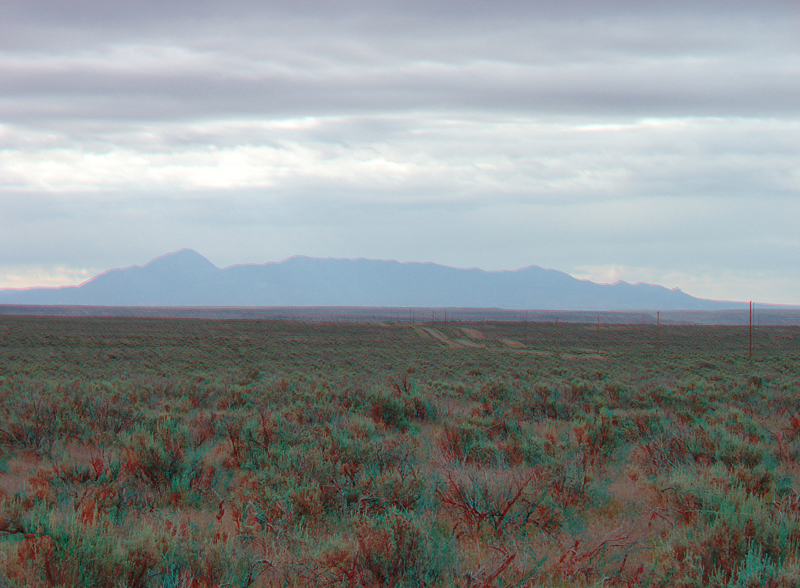| This view is looking east toward Sleeping Ute Mountain from along Utah Highway 262 (about 10 miles west of Hovenweep National Monument). This view shows the broad, flat, sweeping view of a high sagebrush desert that caps Cajon Mesa and other mesas in the region around Hovenweep National Monument in the southeast corner of Utah. The mesa surface is underlain by flat-lying sedimentary rocks, mostly sandstone and conglomerate of the Dakota Sandstone of Late Cretaceous age (Dyman and others, 2002). Sleeping Ute Mountain is thought to be an early Laramide volcanic intrusive complex (latest Cretaceous to possibly early Tertiary) that intruded older Mesozoic sedimentary rocks, although some small intrusion may be as young as Oligocene (Ekren and Houser, 1965; Condon, 1991). If there had been associated volcanoes with these intrusions, they have long since eroded away. Sleeping Ute Mountain is similar to other laccolithic mountains on the Colorado Plateau. A laccolith is a mass of intrusive igneous rock that formed when molten rock (magma) migrating toward the surface becomes trapped between rock layers, pushes them apart, and creates a chamber. These chambers eventually cool into solid granitic rock. The ages of nearby laccolithic mountains of southeast Utah include: Henry mountains about 44 million years; the Abajos about 28 million years, and the La Sals about 23-26 million years, and in southwest Colorado the San Juan volcanic field ranges 36.5 to 26.5 million years (Lipman and others, 1972); an older Laramide age (latest Cretaceous) have been determined for the nearby Carrizo Mountains laccolith of northwest Arizona (Semken and McIntosh, 1997). |

